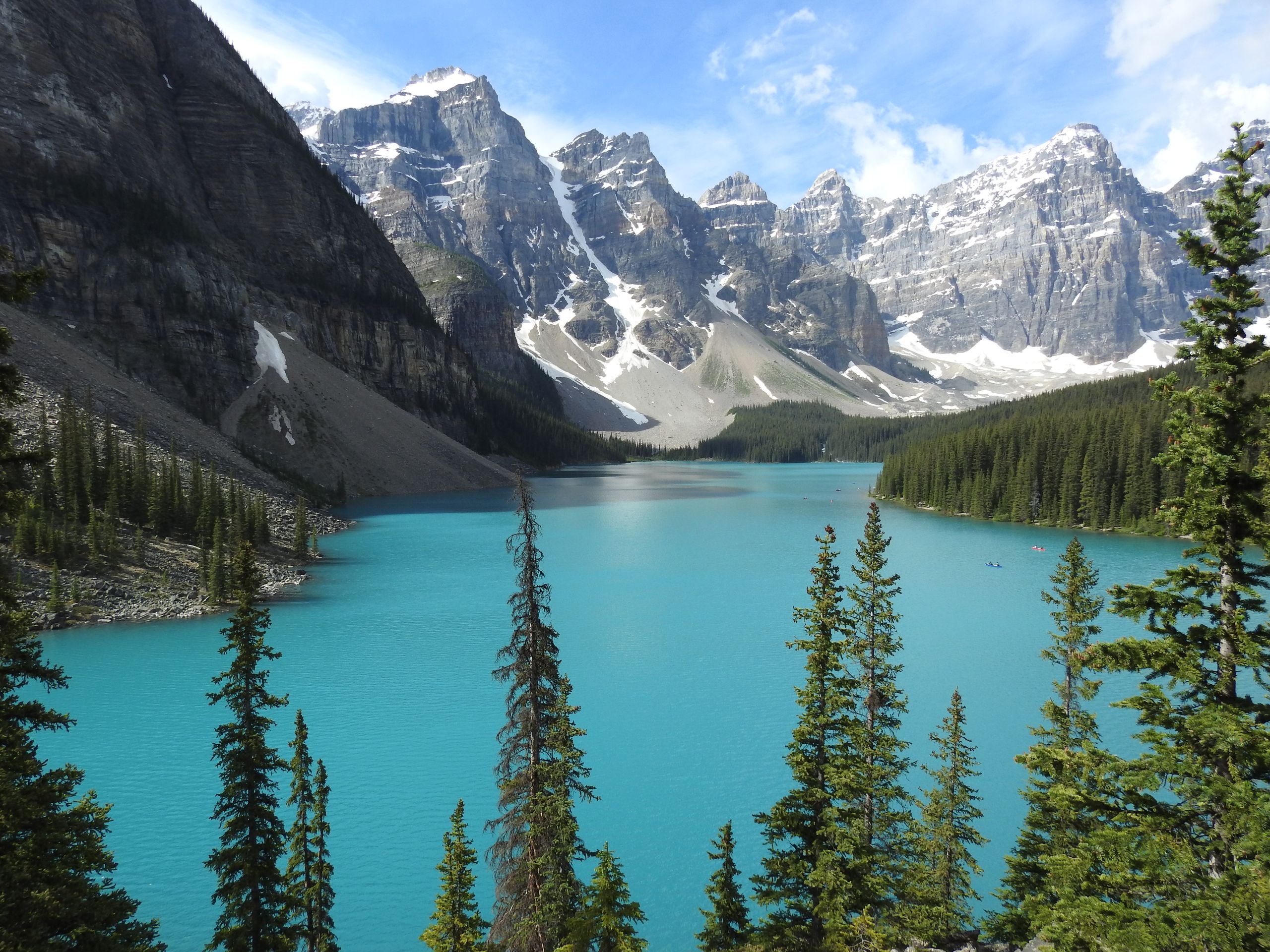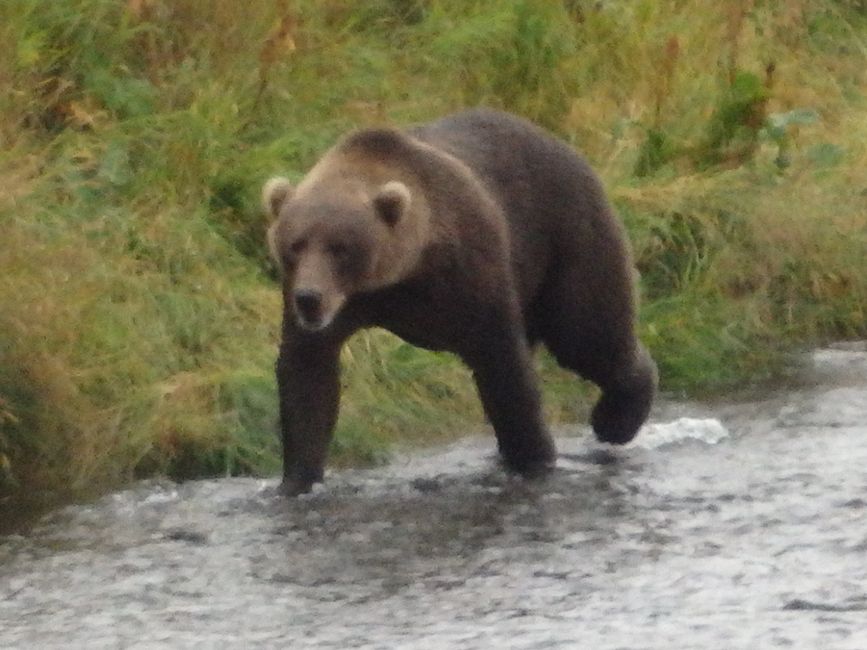BLOG 13 - Bootsfahrt zum Fort Selkirk
Veröffentlicht: 14.08.2022
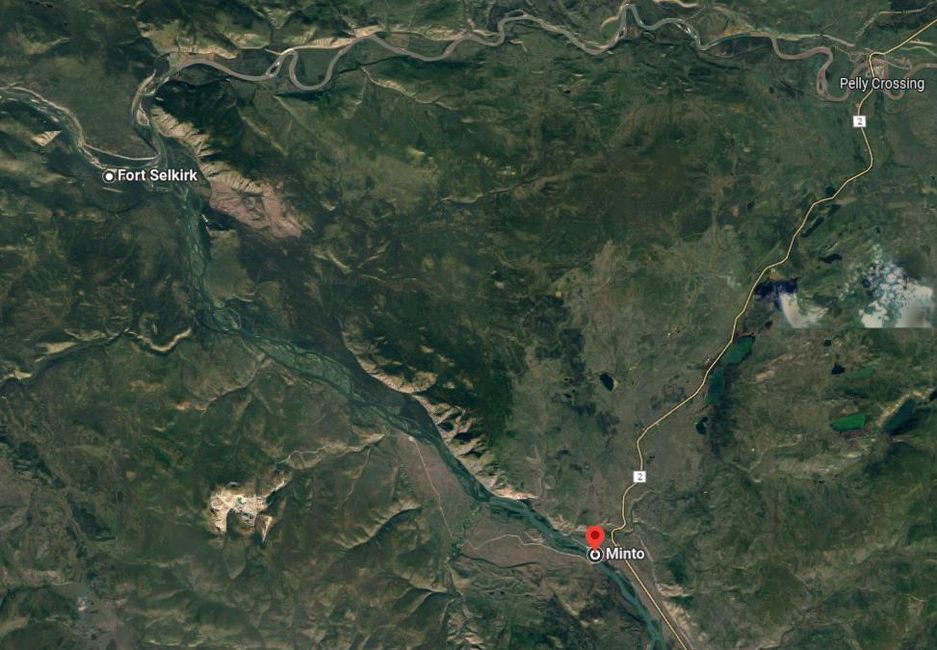
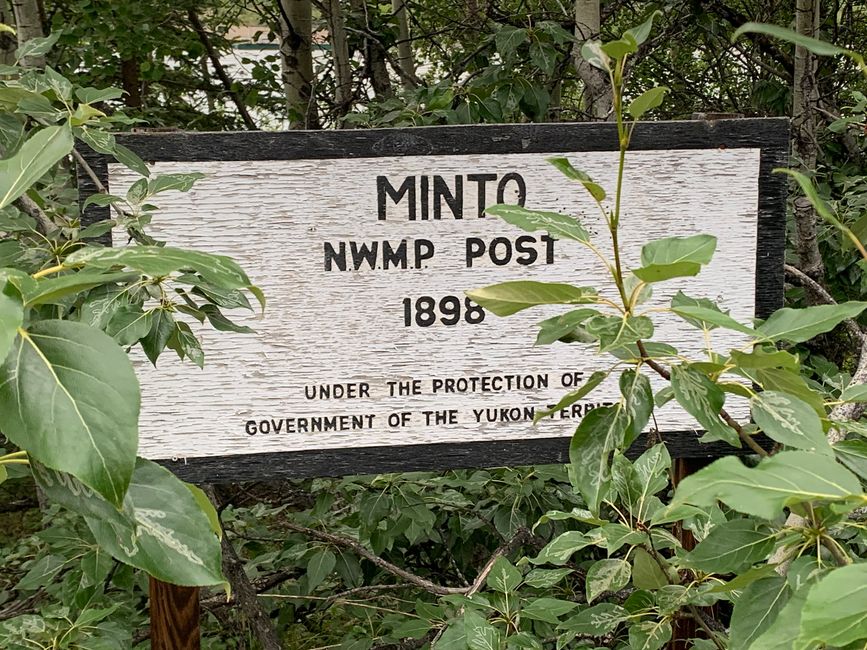
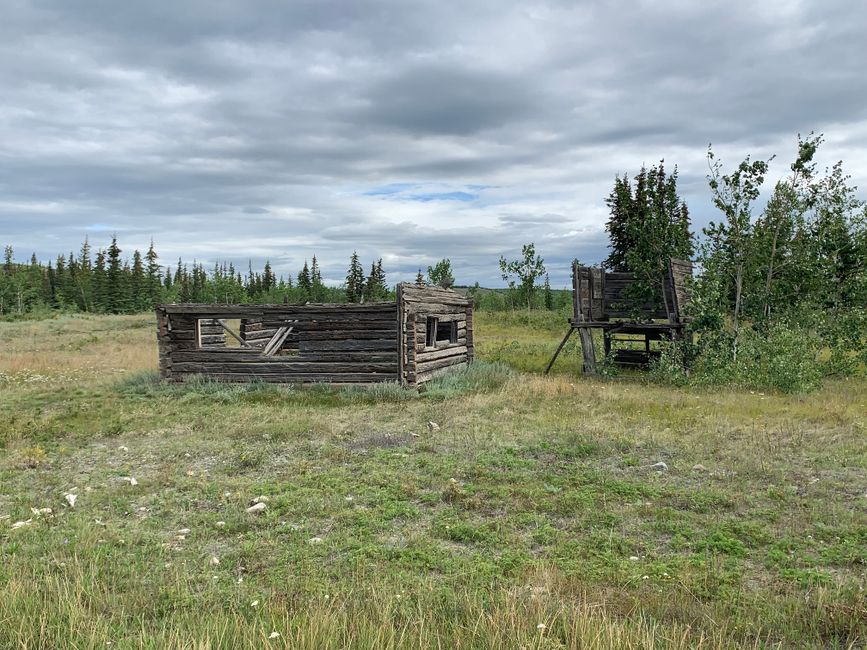
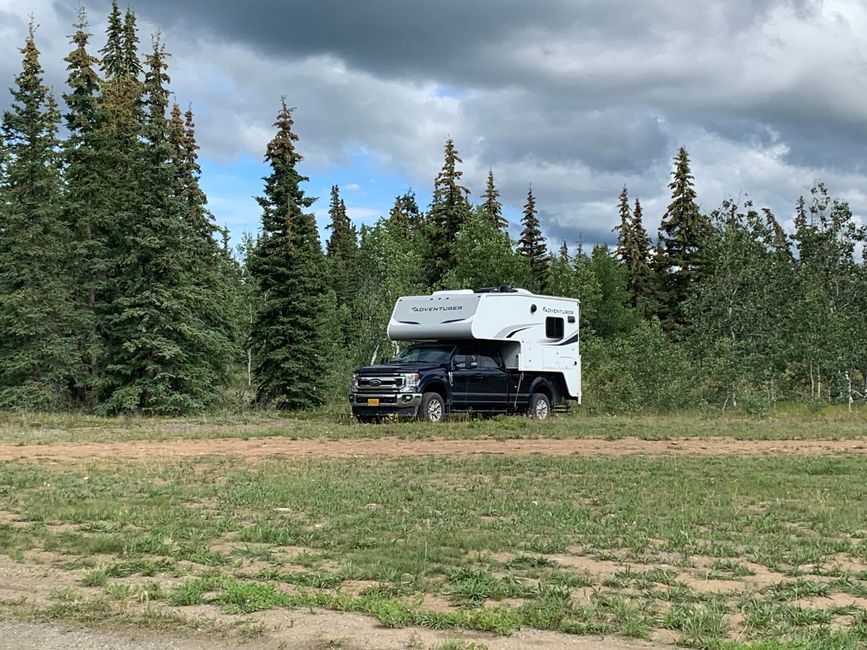
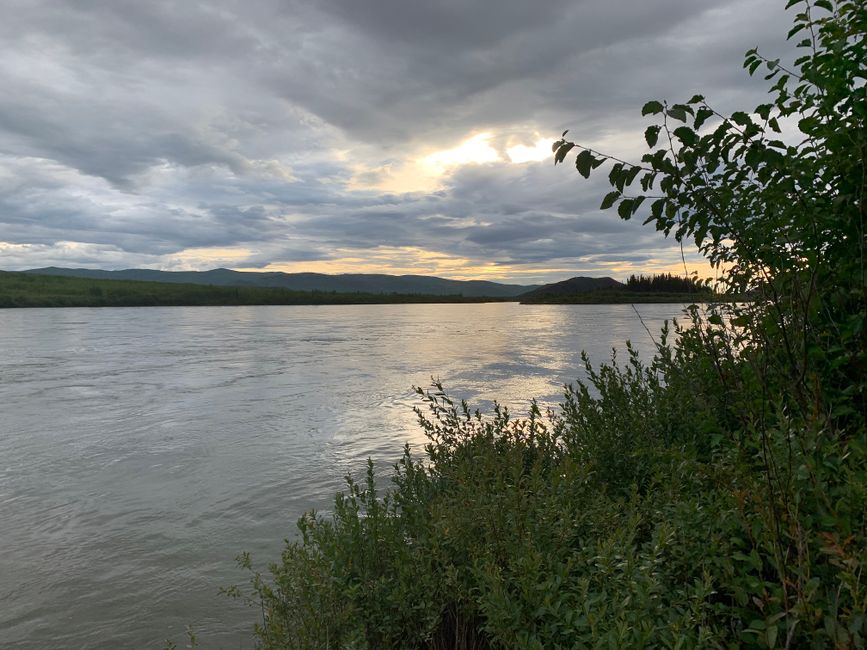
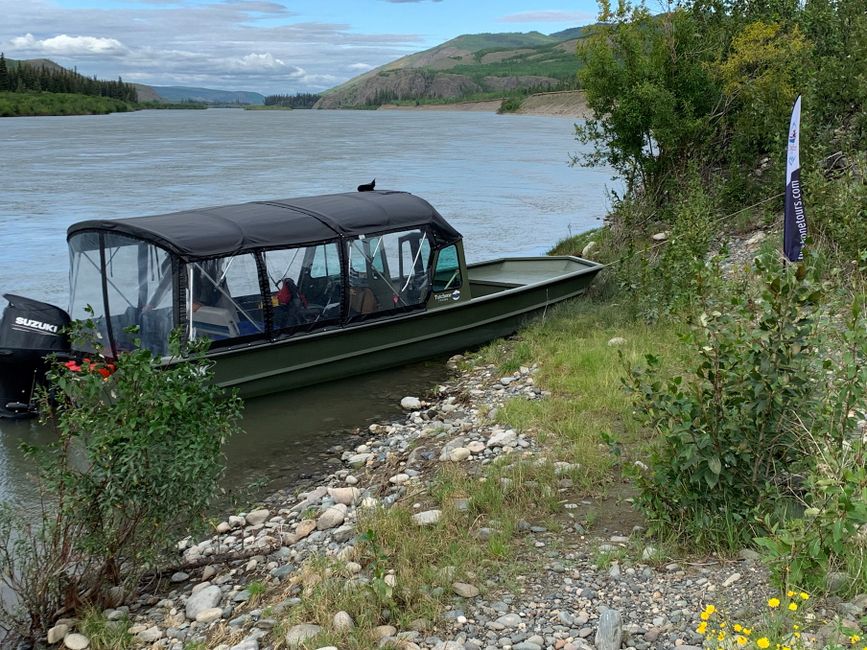
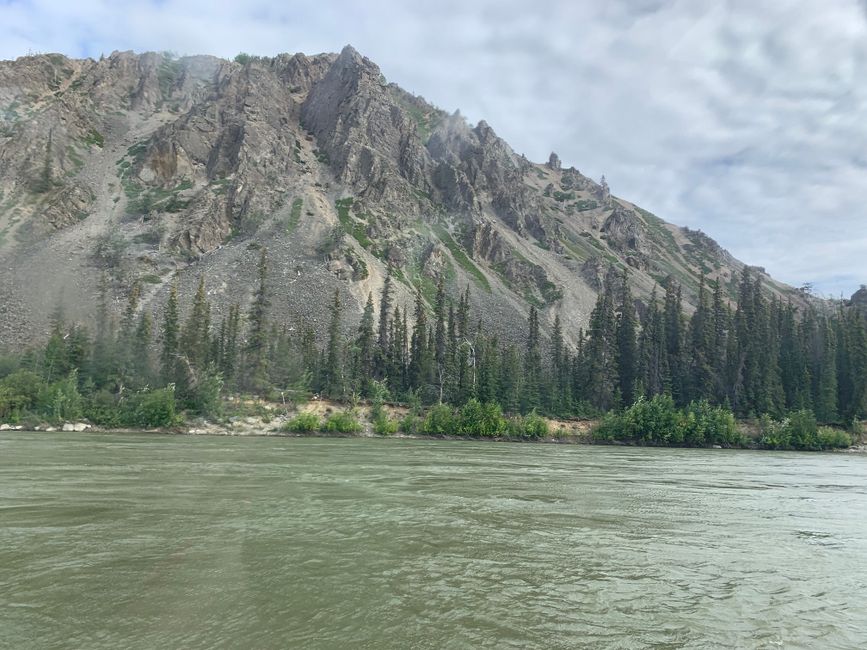
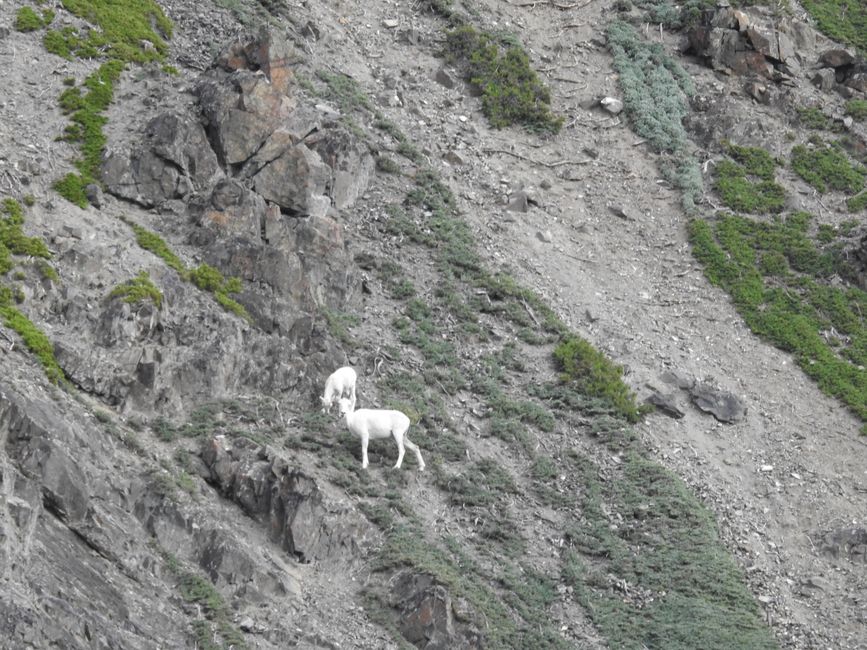
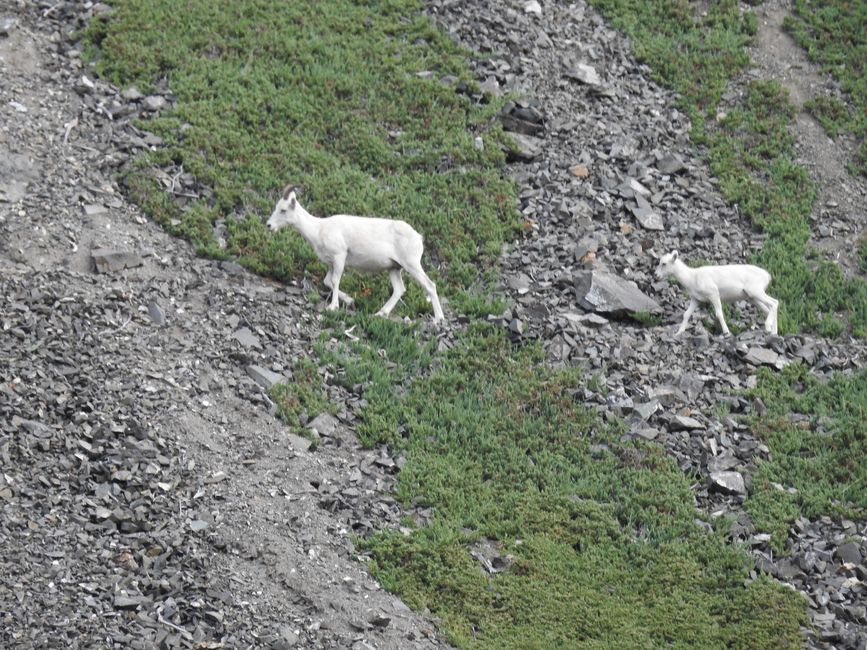
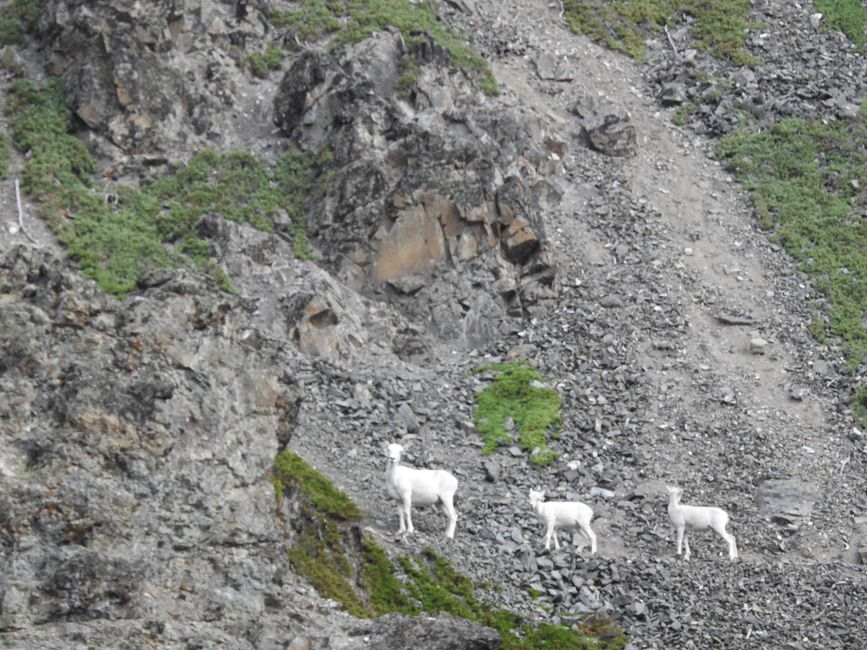
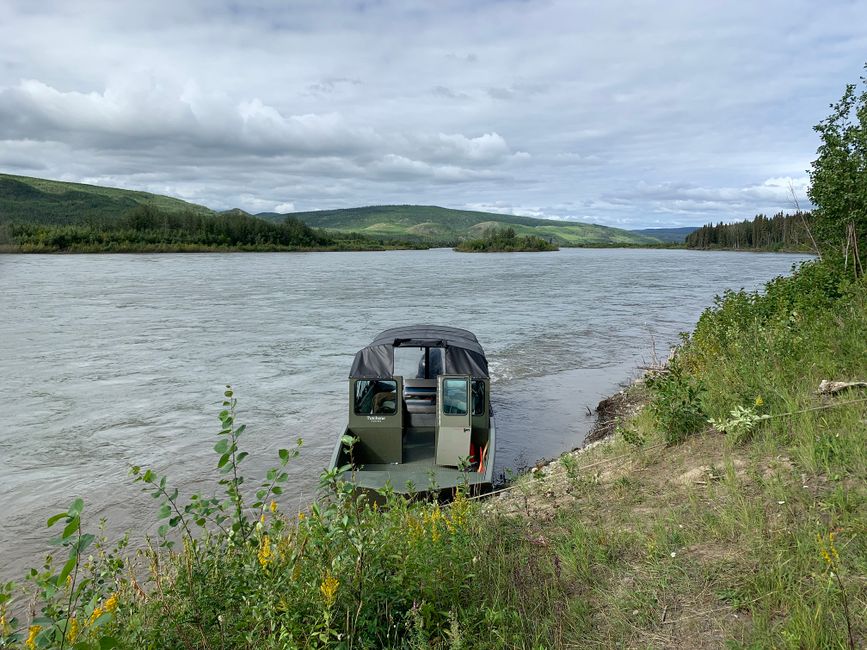
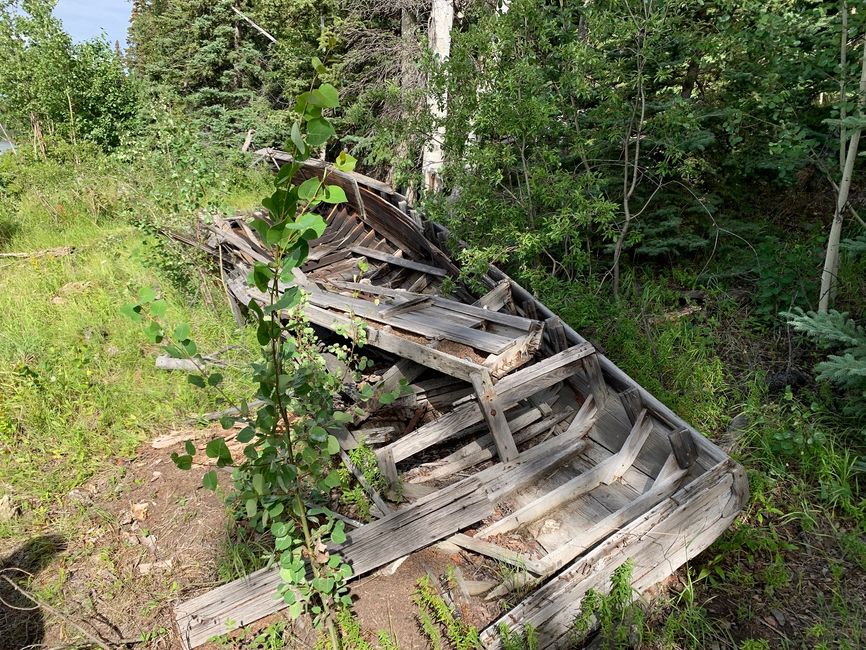
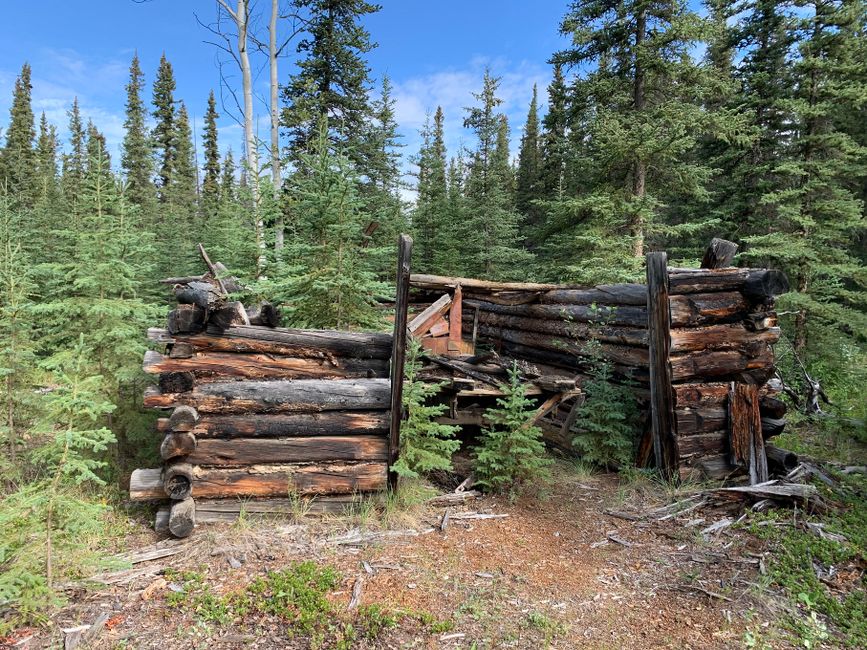
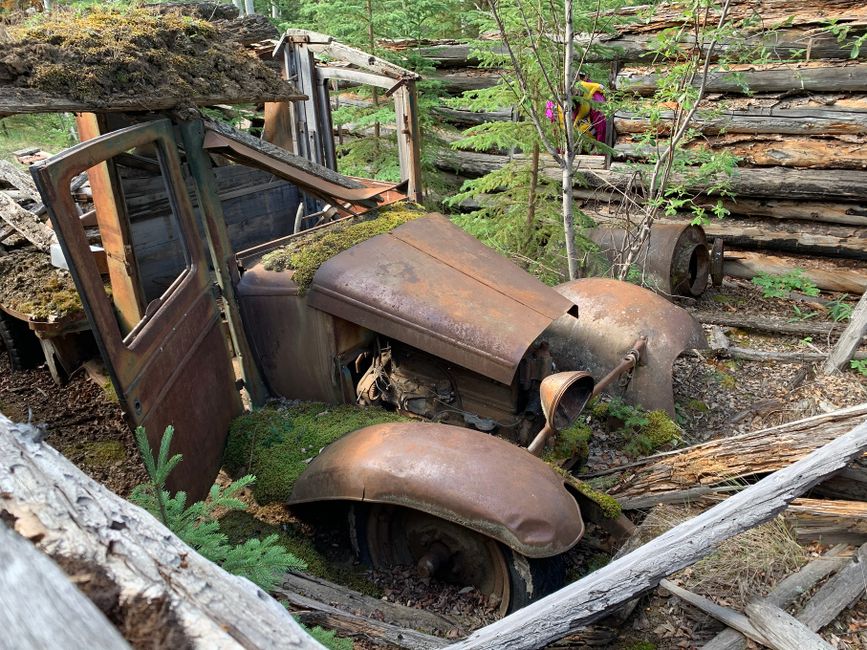
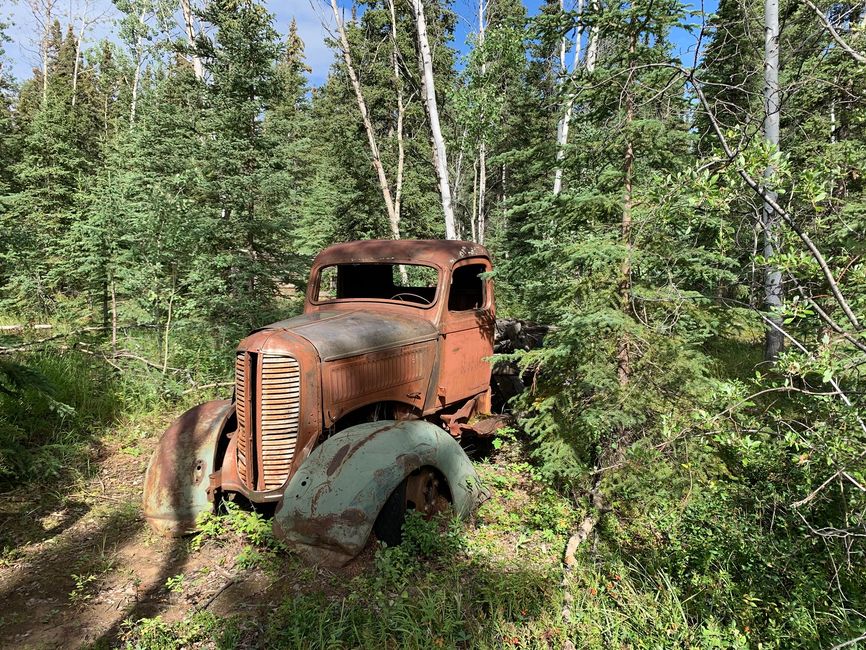
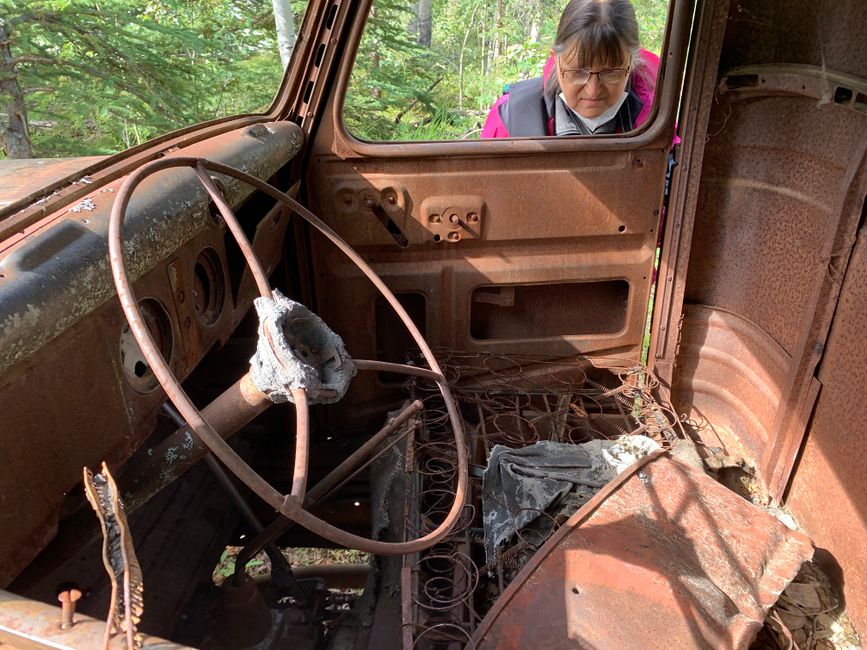
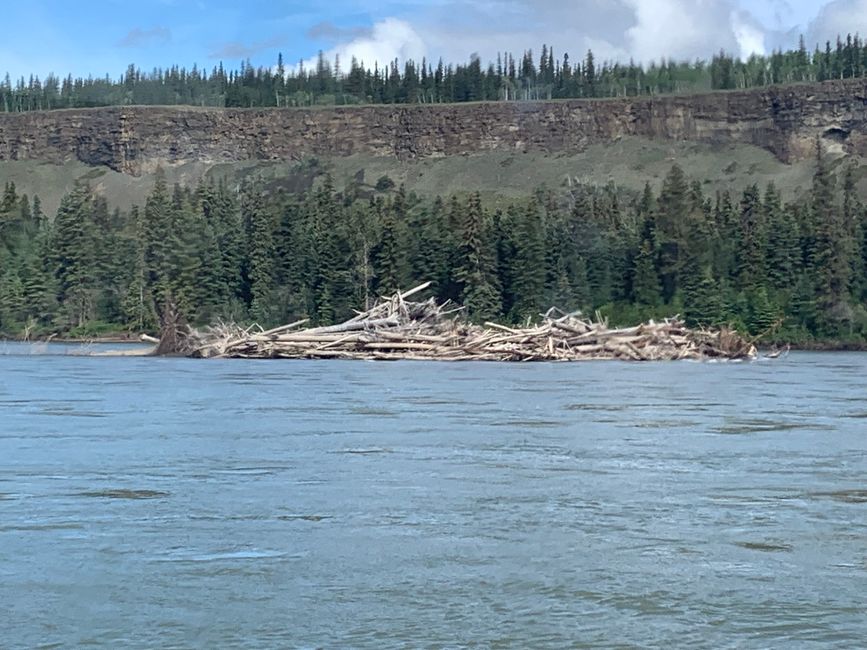
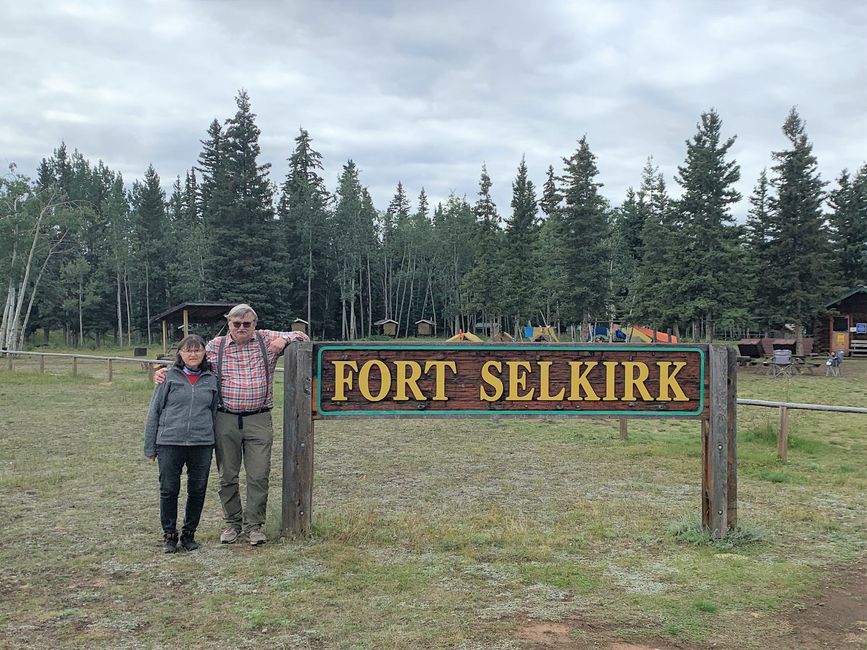
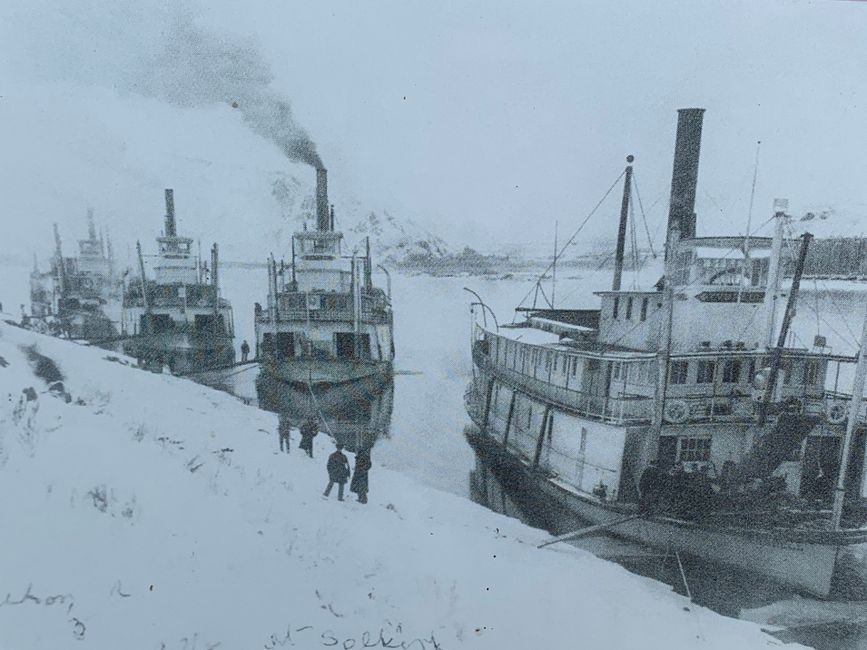
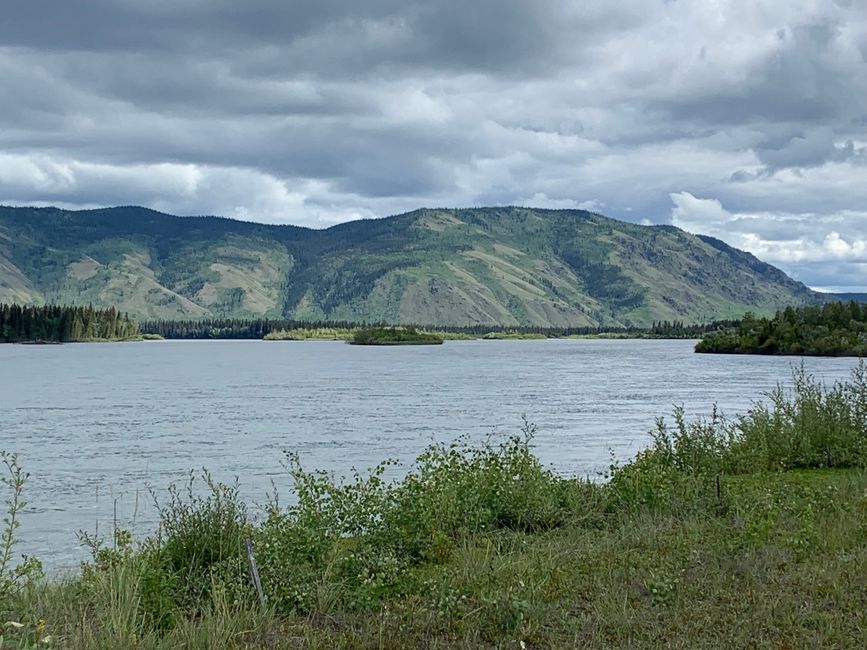
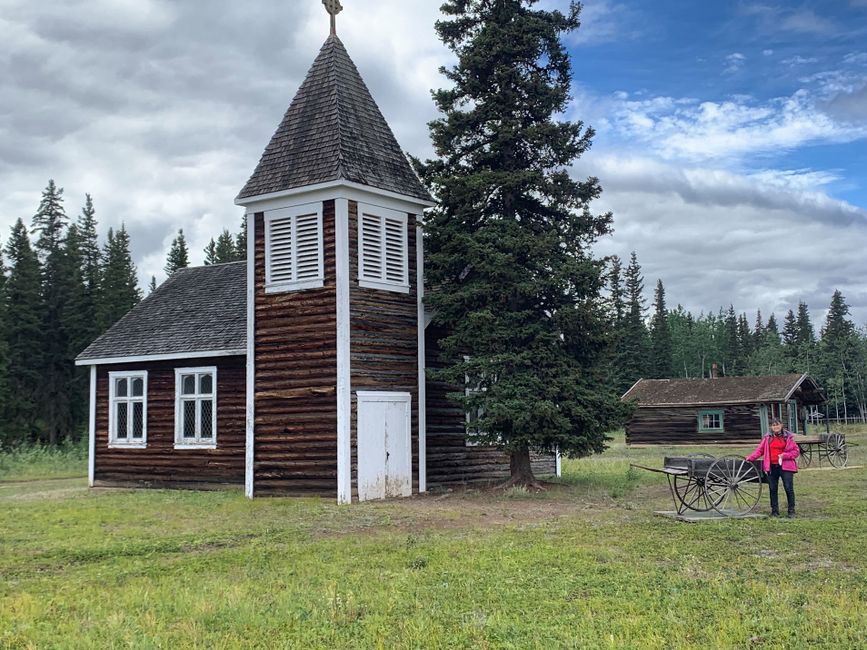
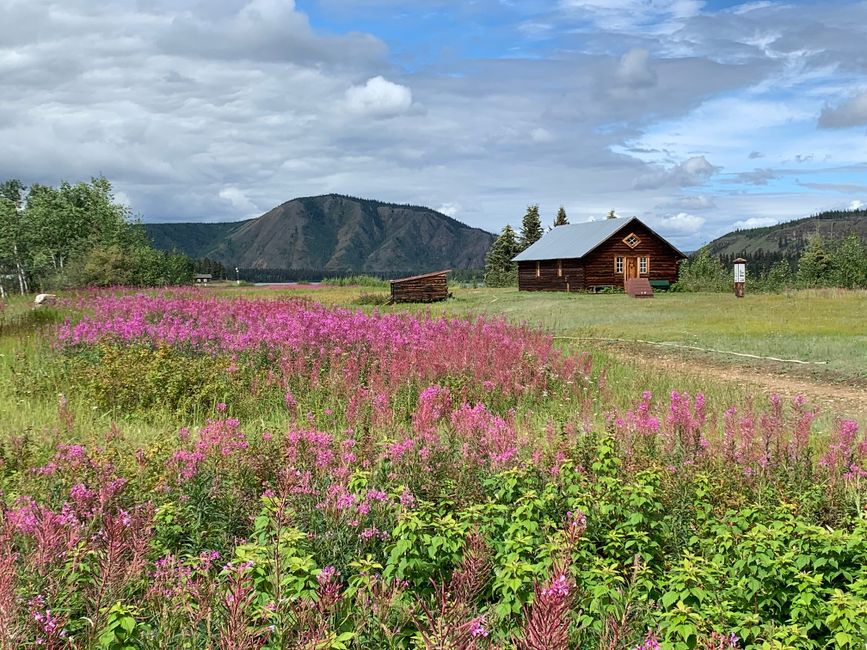
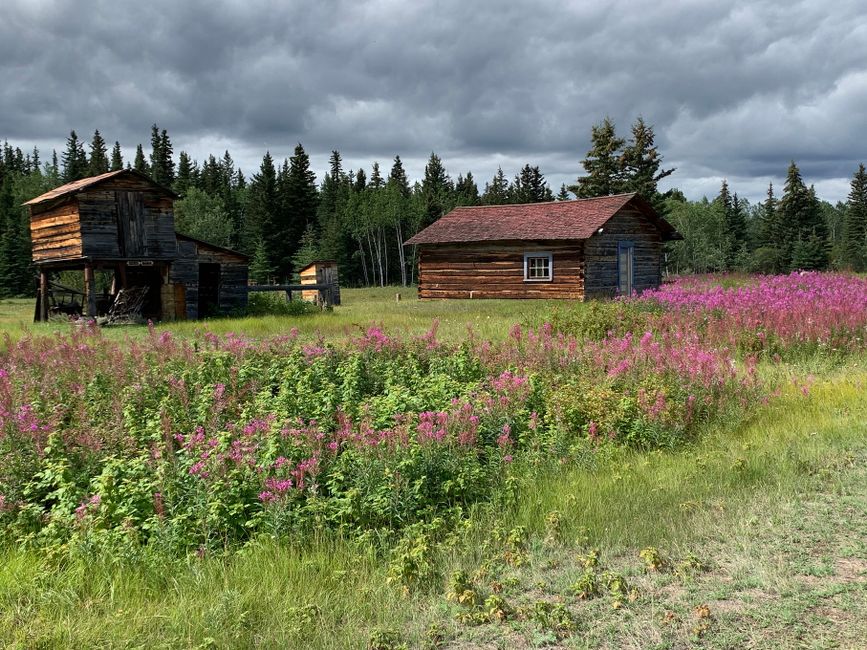
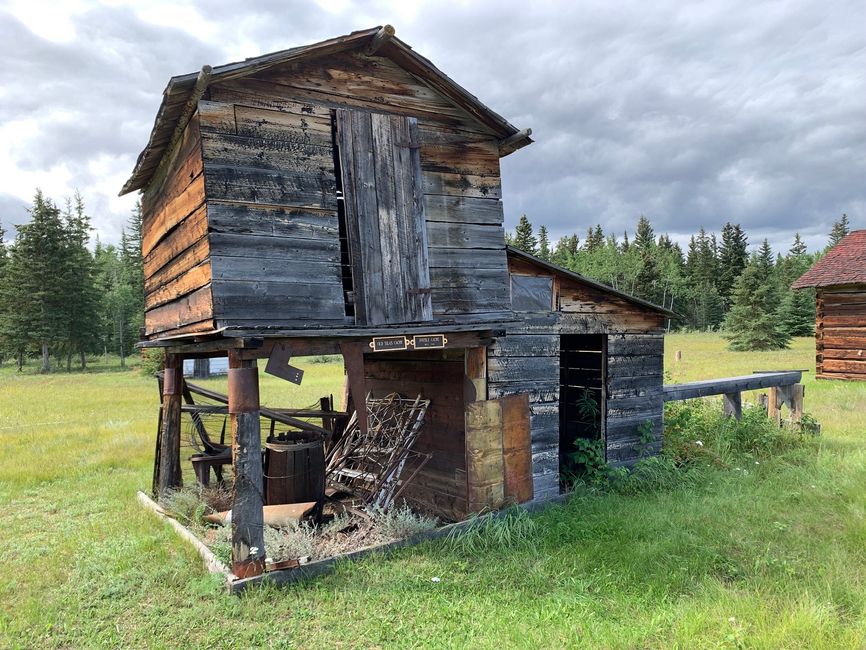
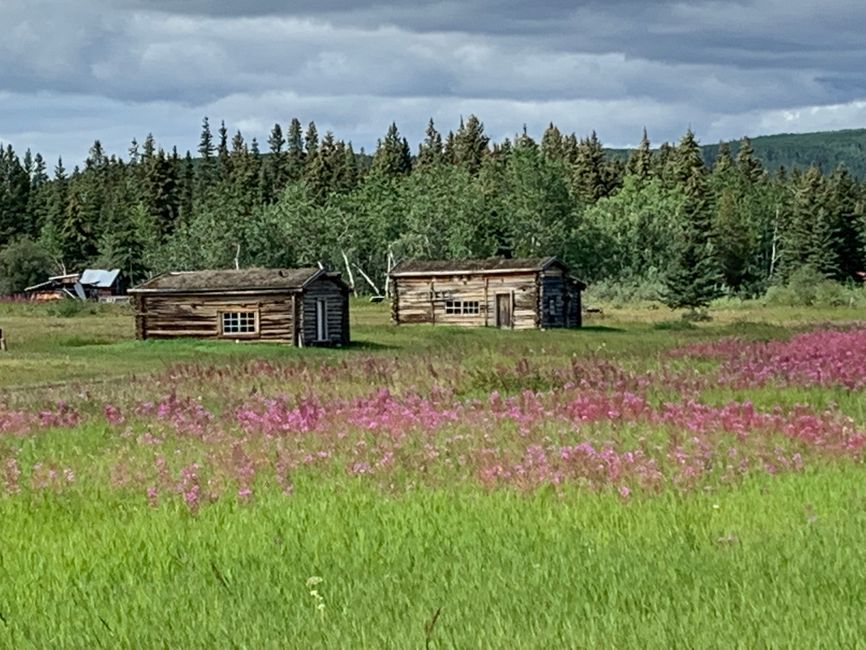
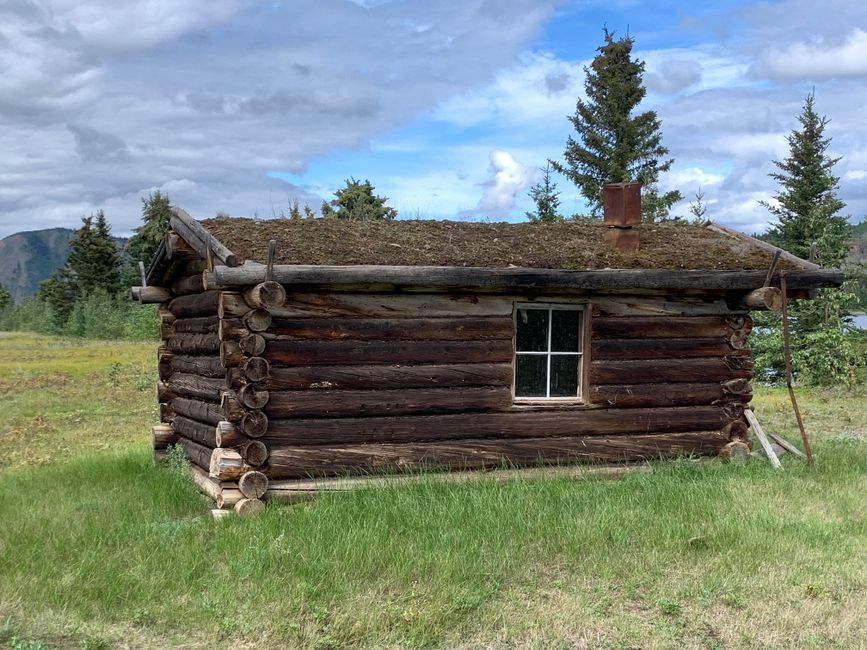
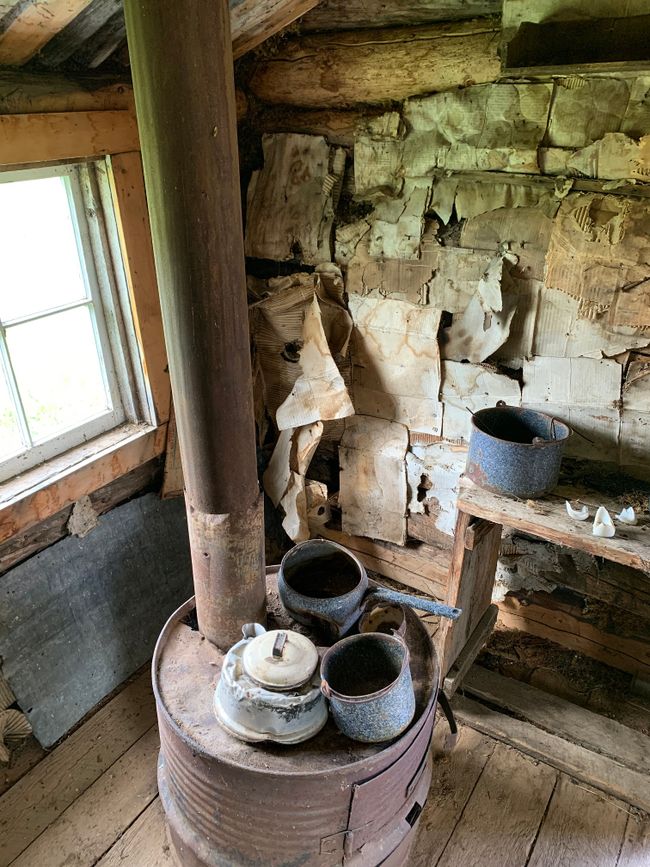
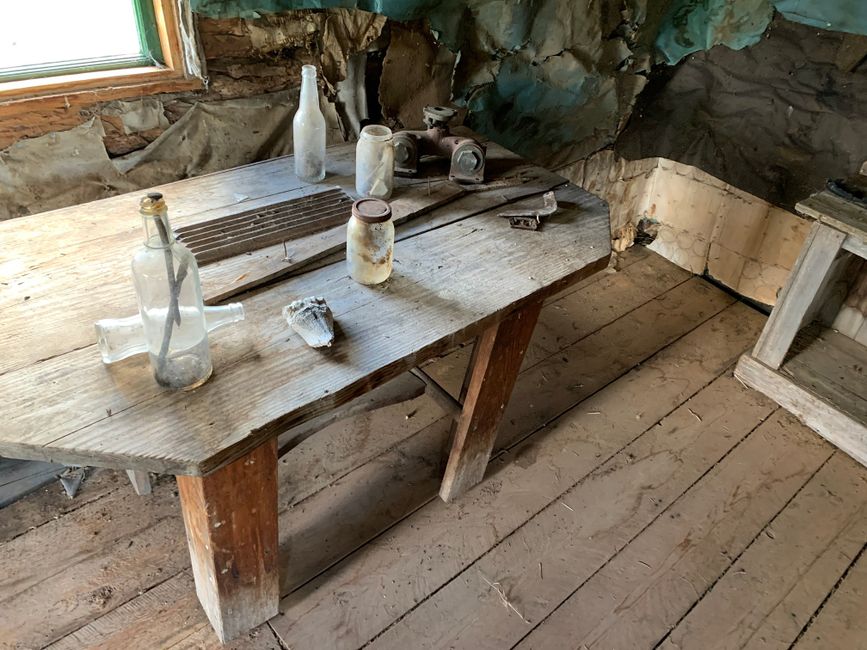
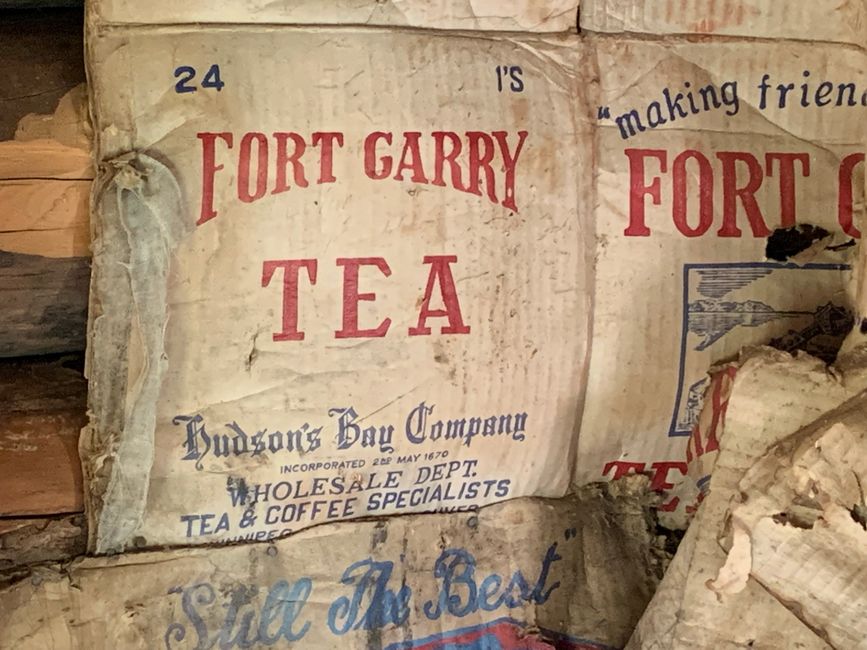
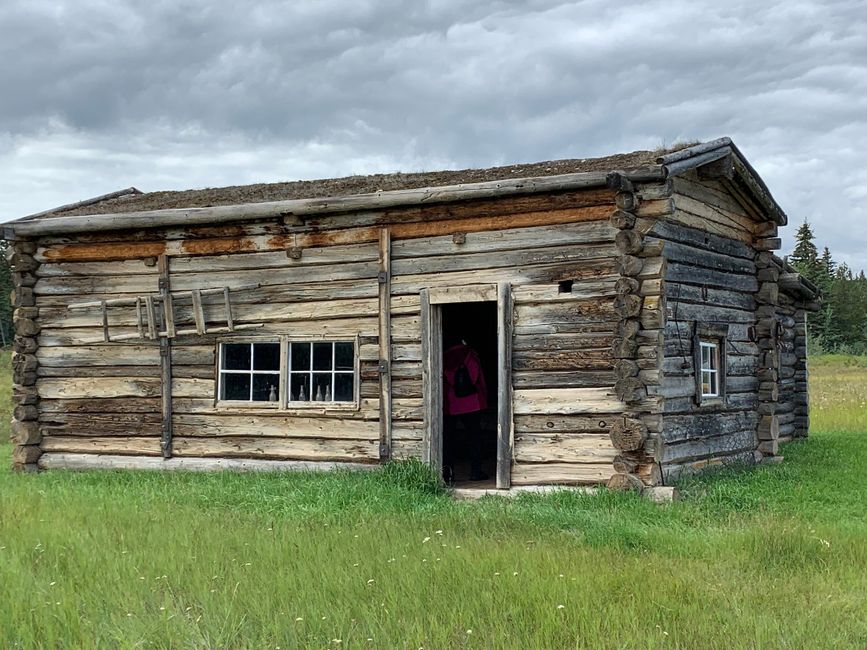
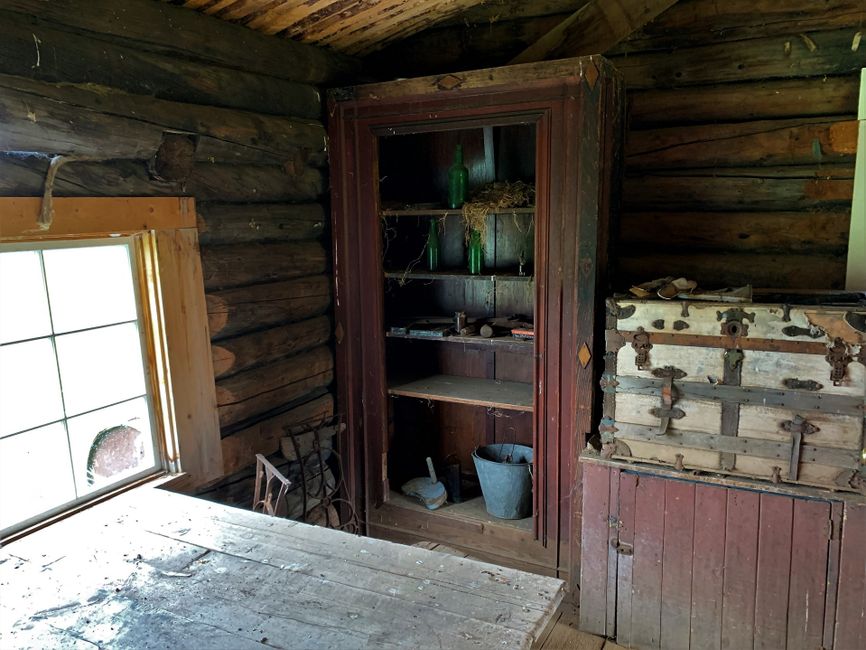
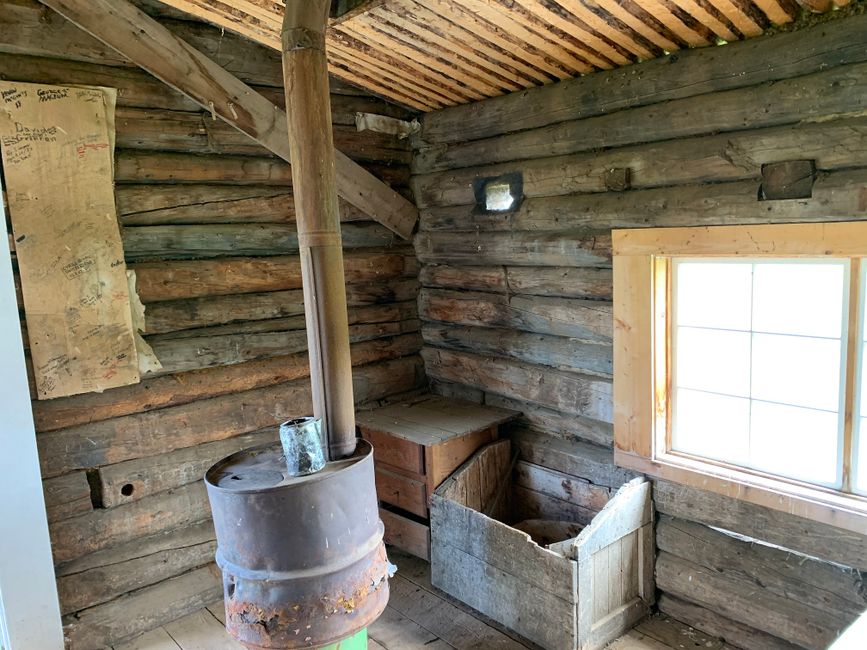
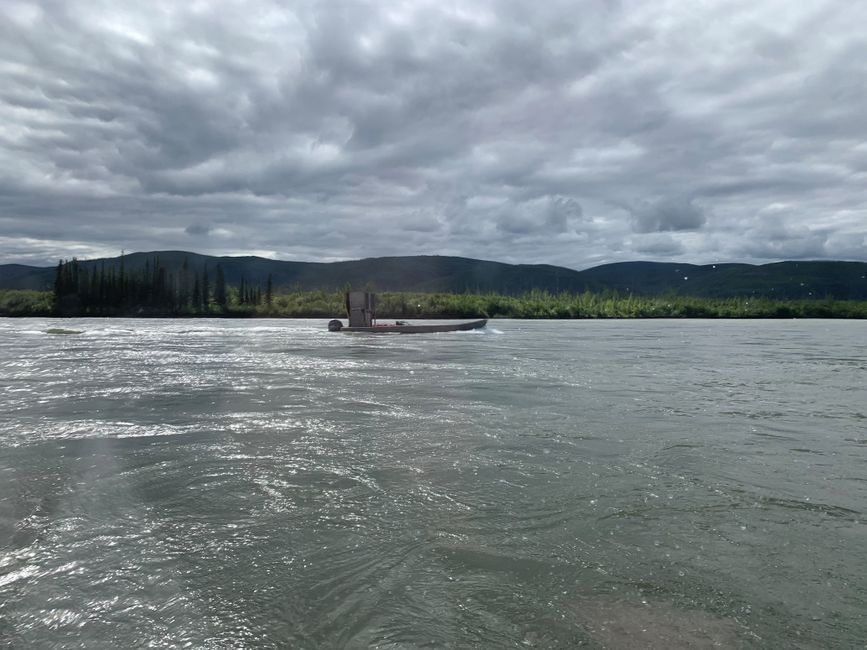
Newsletter abonnieren
Der Weg nach Norden am Klondike Highway führt uns nach Minto – einem verlassenen Posten der North-West Mounted Police (NWMP). Der nahe Campingplatz ist wie so vieles im Norden wegen der wirtschaftlichen Turbulenzen, die COVID hinterlassen hat, temporär oder für immer geschlossen. Im Yukon kein Problem, wir finden einen schönen Platz gleich in Minto, wo wir in unserem Camper ungestört übernachten können.
Am nächsten Morgen geht’s mit einem Boot von „Tutchone Tours“ – von einer Northern Tutchone (Selkirk First Nation) Geschäftsfrau vor zwei Jahren gegründet – vorher hat es für über 20 Jahre nur die Möglichkeit mit Kanu oder Hubschrauber nach Fort Selkirk zu kommen, gegeben.
Auf der Fahrt nach Fort Selkirk können wir am Sheep Mountain wirklich einige Dall Bergschafe beobachten. Ein kurzer Stop führt uns zu Blanchard’s Woodcamp – früher ein wichtiger Versorgungspunkt für die Dampfschiffe, die gewaltige Mengen an Holz für die Feuerung der Dampfkessel benötigten. Die Wälder entlang des Yukon wurden in den etwa 50 Jahren des Schiffbetriebs bis weit hinauf auf die Berge abgeholzt. Das Woodcamp hatte sogar eine Straßenverbindung über die – allerdings eigentlich nicht wirklich befahrbare – erste Dawson Road.
Den folgenden Text habe ich grossteils aus dem „Yukon Register of Historice Places“ übernommen.
Fort Selkirk ist von zentraler Bedeutung für die Heimat der Northern Tutchone und ihre kulturellen Traditionen wie Wildfang, Handel und Reisen. Dieser Ort ist seit Tausenden von Jahren ein traditioneller Ernte- und Sammelort. Seine Bedeutung als Treffpunkt und Handelsplatz zwischen First Nations wird durch ein Netz traditioneller Pfade und archäologischer Artefakte belegt. Es ist der erste Ort, an dem die Northern Tutchone Kolonisten aus der Ferne begegneten und beherbergten. Der Ort erhielt seinen englischen Namen von Robert Campbell von der Hudson's Bay Company, der hier 1848 einen Handelsposten errichtete. Obwohl bereits 1852 von den Kriegern der Chilkoot Indianer, die um ihr bisheriges Handelsmonopol mit den Tutchones fürchteten, zerstört, bedeutete der Posten den Beginn einer Ära als Yukon-Zentrum für Handel und Kommunikation mit der Außenwelt. Es blieb bis Mitte des 20. Jahrhunderts ein Knotenpunkt für den Land-, Fluss- und später den Luftverkehr. In den frühen 1890er Jahren entwickelte sich mit der Gründung von Arthur Harpers Handelsposten und einer Mission der anglikanischen Kirche eine dauerhafte Gemeinschaft. Die Gemeinde wuchs schnell, als Tausende von Stampedern während des Klondike-Goldrauschs im Jahr 1896 nach Dawson City zogen. Die strategische Lage von Fort Selkirk führte dazu, dass es 1898 als Stützpunkt für die Yukon Field Force und als Posten der North-West Mounted Police genutzt wurde seine Überlegung, die erste Hauptstadt des Yukon-Territoriums zu sein. Während der ersten Hälfte des 20. Jahrhunderts blieb Fort Selkirk eine stabile, blühende Gemeinde, in der zwei Kulturen zusammenlebten, arbeiteten, spielten und beteten. In den 1950er Jahren aufgrund des Baus moderner Straßen und des Endes des Raddampferverkehrs aufgegeben, betrachten Mitglieder der Selkirk First Nation und andere Yukoner sie weiterhin als ihre angestammte Heimat. Die Partnerschaft zwischen der Selkirk First Nation und den Regierungen des Yukon als Miteigentümer und Mitverwalter des Geländes veranschaulicht den anhaltenden Geist der intensiven und kooperativen Fürsorge für Fort Selkirk.
Heading north on the Klondike Highway takes us to Minto - an abandoned North-West Mounted Police (NWMP) post. The nearby campsite, like so much in the north, is temporarily or permanently closed due to the economic turmoil that COVID has left in its wake. No problem in the Yukon, we find a nice place right in Minto where we can sleep undisturbed in our camper.
The next morning, we board a boat from “Tutchone Tours” - founded by a Northern Tutchone (Selkirk First Nation) businesswoman two years ago - before that for over 20 years the only way to get to Fort Selkirk was by canoe or helicopter.
On the way to Fort Selkirk, we really get to see some Dall Mountain sheep on Sheep Mountain. A quick stop takes us to Blanchard's Woodcamp - formerly an important supply point for the steamboats that required vast amounts of wood to fuel the steam boilers. The forests along the Yukon have been cleared far up into the mountains in the roughly 50 years of the ship's operation. The Woodcamp even had a road connection via the first Dawson Road, which was actually not really passable.
The following text I have taken largely from the "Yukon Register of Historic Places".
Fort Selkirk is central to the homeland of the Northern Tutchone and their cultural traditions such as game harvesting, trade and travel. This place has been a traditional harvesting and gathering site for thousands of years. Its importance as a place for meeting and trading between First Nations is evidenced by a network of traditional trails and archaeological artifacts. It is the first place where the Northern Tutchone people encountered and hosted colonists from afar. The site was given its English name by Robert Campbell of the Hudson's Bay Company, who established a trading post here in 1848. Although already destroyed in 1852 by the warriors of the Chilkoot Indians, who feared for their previous trade monopoly with the Tutchones, the post signified the beginning of an era as a Yukon center of commerce and communication with the outside world. It continued as a hub of land, river and later, air transportation until the middle of the 20th century.
A permanent community evolved in the early1890s with the establishment of Arthur Harper's trading post and an Anglican Church mission. The community grew quickly as thousands of stampeders headed for Dawson City during the Klondike Gold Rush in 1896. The strategic location of Fort Selkirk led to its use as a base for the Yukon Field Force and a North-West Mounted Police post in 1898, and its consideration to be the first Capital of the Yukon Territory. Throughout the first half of the 20th century Fort Selkirk remained a stable, thriving community where two cultures lived, worked, played and prayed together. Abandoned in the 1950s due to the construction of modern roads and the end of sternwheeler traffic, members of the Selkirk First Nation and other Yukoners continue to think of it as their ancestral home.
The partnership between the Selkirk First Nation and Yukon governments as co-owners and co-managers of the site illustrates the continuing spirit of deep and cooperative care for Fort Selkirk.
Newsletter abonnieren
Antworten
